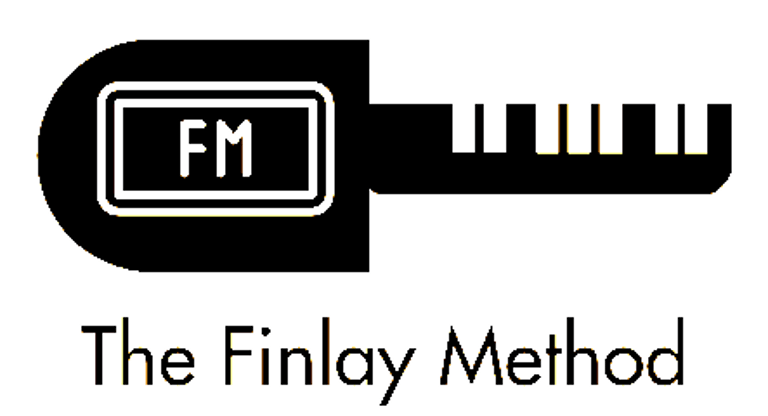
Why Studying (a Little Bit of) Anatomy is Like Acquiring X-Ray Vision as a Pianist
What if you could "see" what is causing your tension?
Michael Finlay
4/16/20253 min read
What if you could see inside your arms and hands while you played? In a very real sense, that’s what even a basic understanding of anatomy can give you: x-ray vision. The ability to look past the surface and see what’s really going on.
This isn’t about memorizing every muscle name (although if you’re as nerdy as I am and want to, I can point you to some great sources that will make it easy to do just that! Google “Dr. Preddy” and watch his YouTube videos—he’s amazing). It’s about having just enough anatomical literacy to stop guessing and start solving. To know when a movement is biomechanically efficient—and when it’s setting you up for tension, fatigue, or injury.
Here’s what that kind of x-ray vision can do for you:
1. It Demystifies "Relaxation" and "Freedom" at the Piano
We all know that healthy technique has something to do with relaxation, right?
But what does that actually mean? How do you relax a wrist or a shoulder? For me, the word isn’t specific enough to be useful—it’s more of a goal than an instruction.
Take the shoulder as an example. Most people think of it as a simple ball-and-socket joint where the upper arm meets the body.
In reality, the shoulder is a complex system involving three joints, not one:
The glenohumeral joint, where the upper arm fits into the scapula
The acromioclavicular joint, where the scapula connects to the collarbone
The sternoclavicular joint, which links the clavicle to the sternum—your only bony connection between the arm and the torso
That last one surprises a lot of people. Your arm goes all the way to the center of your chest. Which means when we talk about "freeing the shoulder," we have to include the chest and upper back in our thinking.
When you understand this, you start to think differently. You develop the ability to pinpoint the source of the tension and work towards a true solution to the problem.
2. It Helps You Work With Your Body, Not Against It
Once you understand what your body is and isn’t built to do, you stop asking it to do the impossible.
Case in point: the fourth finger. It shares tendons with its neighbors and lacks an independent extensor. Compare this to the second and fifth fingers, which do have independent extensors. That’s why they’re easier to move independently: it’s built into our anatomical design.
So no, the fourth finger is never going to be “independent" in this way. Just ask Robert Schumann.
The goal isn’t to muscle through limitations. The goal is to work with your body’s design. When you stop chasing myths about “finger strength” and start paying attention to alignment, leverage, and whole-arm coordination, everything opens up: your sound improves, your risk of injury drops, and your expressive range expands.
3. It Makes You a Better Teacher
Here’s where knowing your anatomy turns into a superpower.
If you're a teacher, knowing a bit of anatomy allows you to diagnose technical problems with far more clarity. For example, instead of telling a student, "Your wrist is tight! Relax it," you can instead understand the root of the problem—perhaps a co-contraction in the forearm caused by spreading the fingers apart. Then you can offer an evidence-based solution that will have an immediate effect:
“Try keeping 2–3–4 closer together and keeping a rounder hand shape.”
That one shift in language—from vague to precise—is powerful.
You start to recognize patterns: overuse of the thumb (along with a complaint of thumb-side wrist pain or fatigue), poor wrist position leading to pain, tightness all along the inside of the arm due to clenching the thumb. The list goes on and on.
And because you understand the structures involved, you know how to help—quickly and effectively.
The Takeaway
You don’t need a degree in kinesiology to develop this kind of insight. Even a small amount of anatomical knowledge can transform the way you play, teach, and listen.
Here are a few good places to start:
Learn the difference between extrinsic and intrinsic muscles of the hand, and which actions originate in the forearm as opposed to the hand (for example: the last joint of the finger = forearm; the main knuckle joint = hand—and much more agile).
Familiarize yourself with the concepts of co-contraction and the midrange—the "goldilocks zone" where opposing muscles aren’t fighting each other
Understand the structure of the shoulder joint, especially how the scapula and clavicle contribute to arm freedom
Learn about the median and ulnar nerves, and where they’re most likely to get compressed (hint: the neck, elbow, and wrist)
Once you learn to see what’s really happening beneath the surface, you’ll never want to go back!
🎹 Want to dive deeper into healthy technique?
Subscribe to my mailing list to get my Technique Quick Start Guide, workshop invitations, and thoughtful insights on how biomechanics, anatomy, and artistry intersect at the piano.
👉 www.tinyurl.com/fivetweaks
